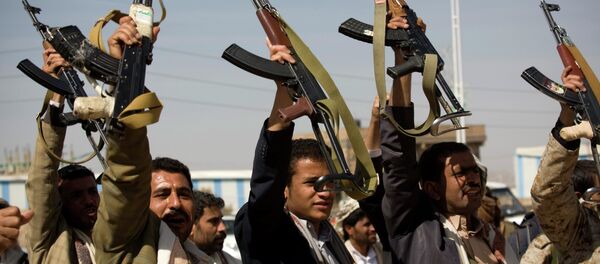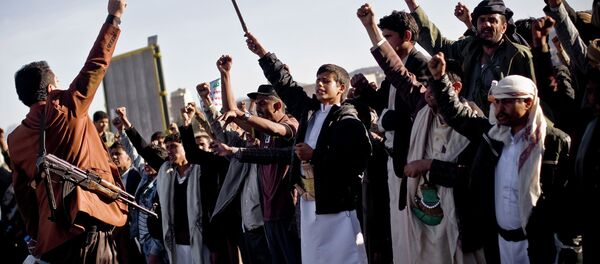MOSCOW (Sputnik) — Houthis belong to Zaidism, a branch of Shiite Islam. Zaidis represent about one third of Yemen’s population of 25 million people.
Zaidism is practiced in Iraq, Iran and the Arabian Peninsula. Zaidis created the Idrisid state and ruled Morocco for almost 200 years beginning in the 7th century. Groups that professed to the beliefs of the Shiite sect of Islam had been ruling Yemen for more than a thousand years, until a 1962 coup. Yemen's northern Saada Governorate is the Zaidi traditional stronghold.
Initially the group was organized as an assembly called the "Faithful Youth Forum." Subsequently, it split into two movements — the first called for greater openness, while the second supported strict adherence to traditional heritage. The founder of the group Hussein Badreddin Houthi was an adherent of the first approach.
Supporters of the movement were called Houthis after the founder. In 2004, Hussein Badreddin Houthi accused former President of Yemen Ali Abdullah Saleh of serving US interests and proclaimed himself an imam. An attempt to arrest Houthi ended in his death, sparking the protest movement. Houthi’s father became the group's new leader. He was succeeded by Houthi’s brother Abdul-Malik Houthi.
The now-renamed Ansar Allah party became a military and political force in Yemen, one of the poorest countries in the Middle East. The movement positions Yemen as an Islamic Arab nation, oppressed by the United States and Israel.
Their political program comprises such slogans "Death to America" and "Death to Israel."
In 2014, after repeated incidents of discrimination and rights abuse by the government of Yemen, the Houthis forced the president to step down, accusing him of insufficient protection of the population from terrorism, including al-Qaeda. By March 2015, a large part of the country, including the capital Sanaa, was under the control of the Houthis.
On March 25, Saudi Arabia and several of its allies in the Arab League launched airstrikes against the Houthis, primarily in Sanaa.




